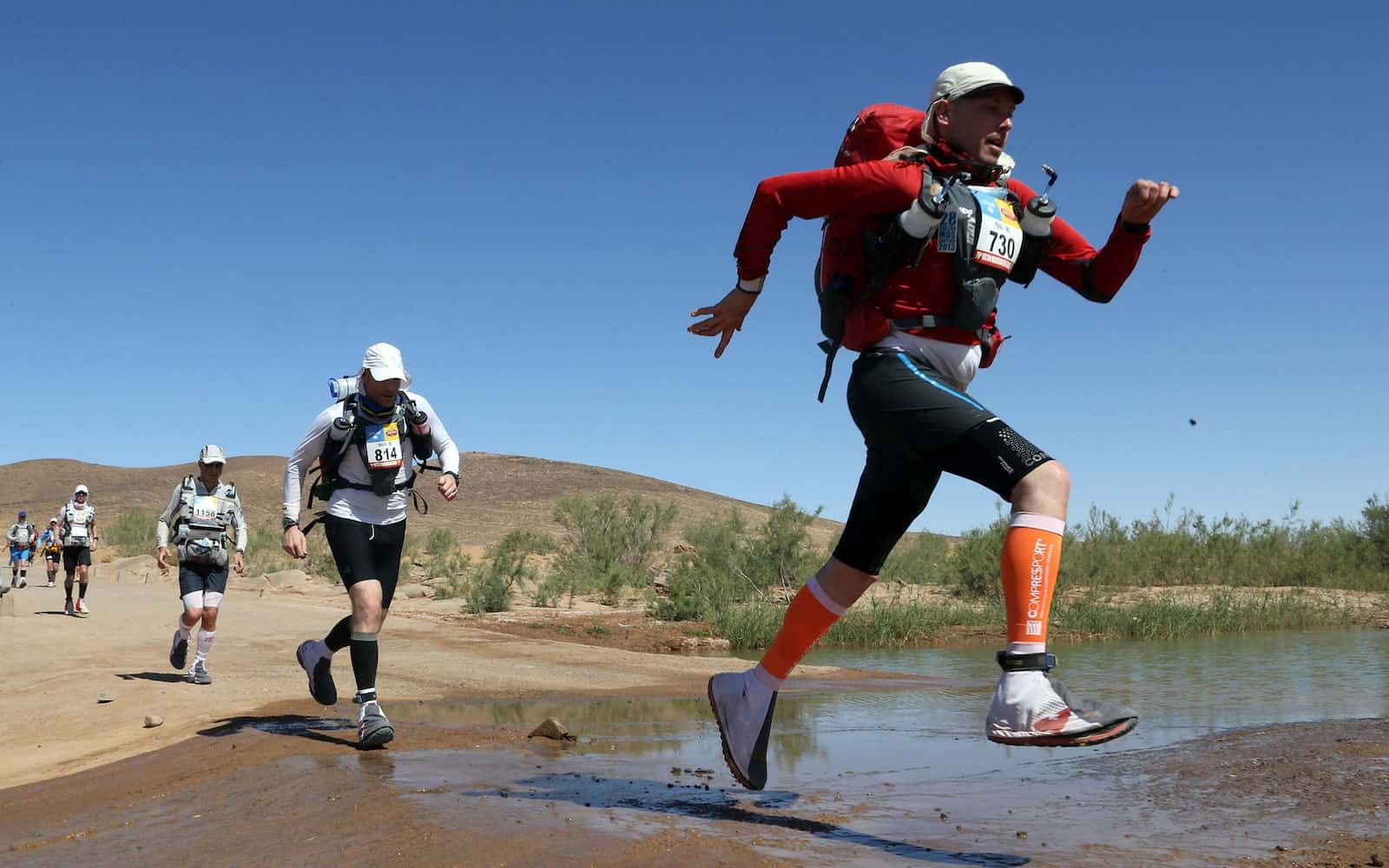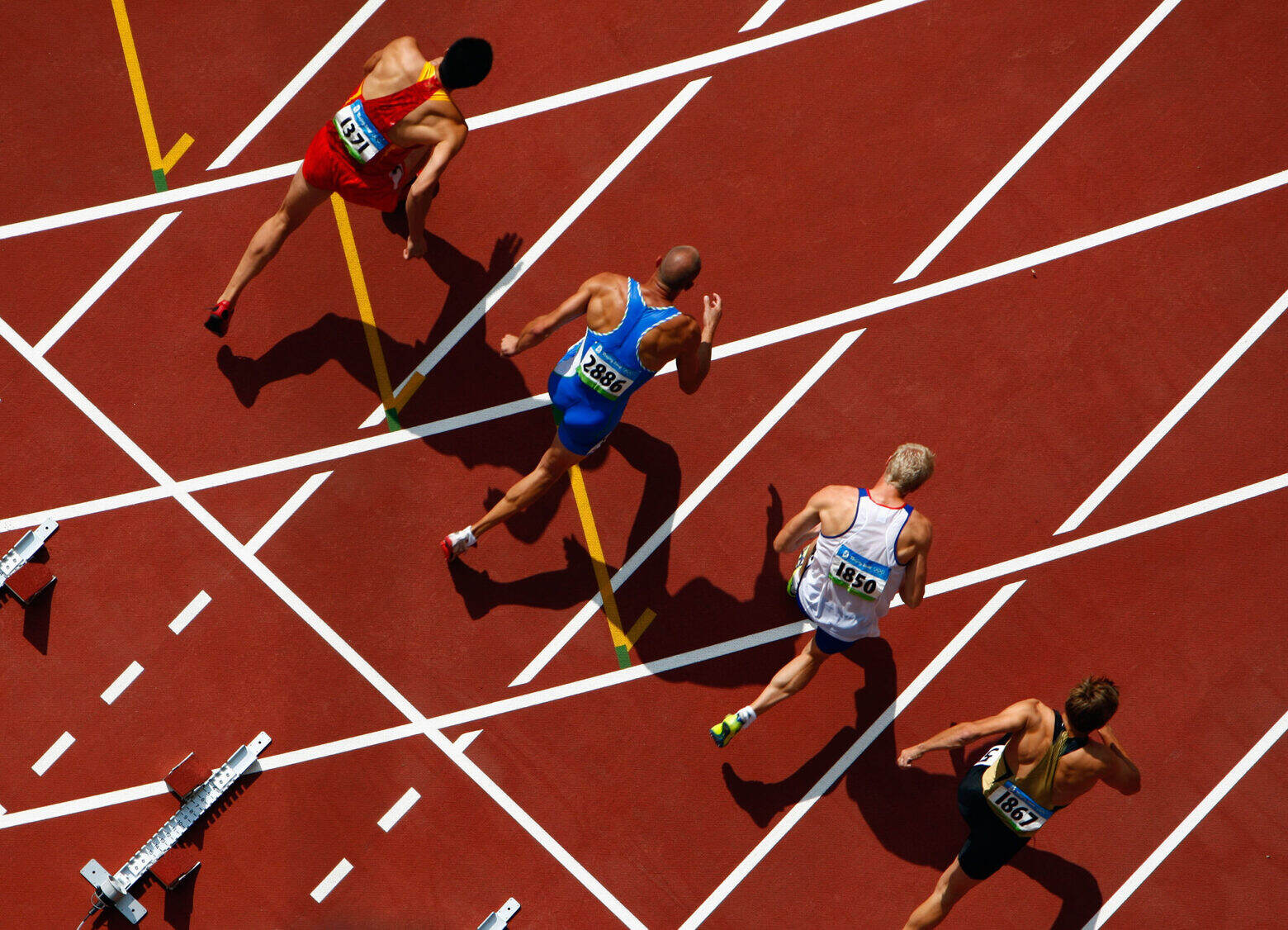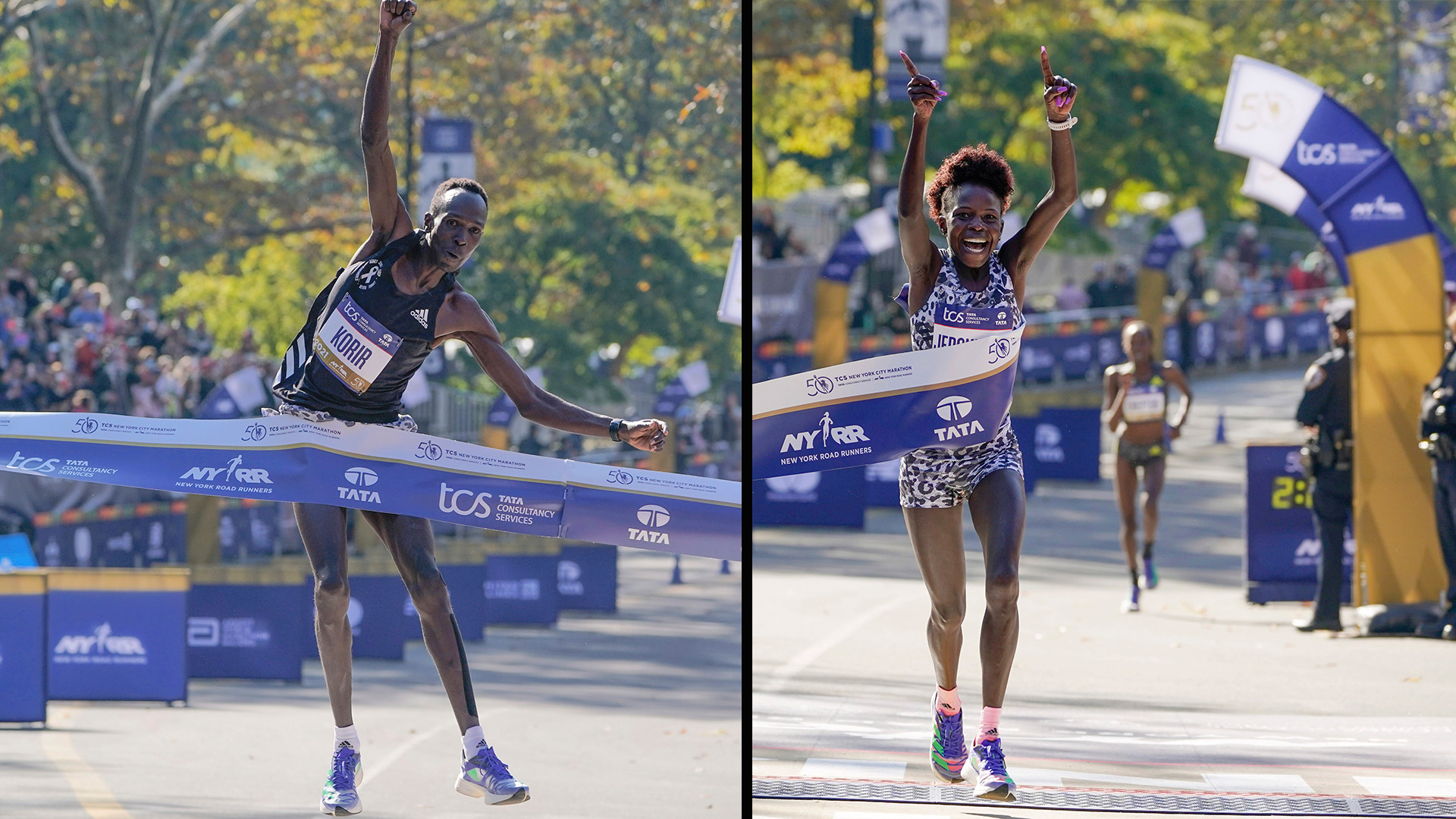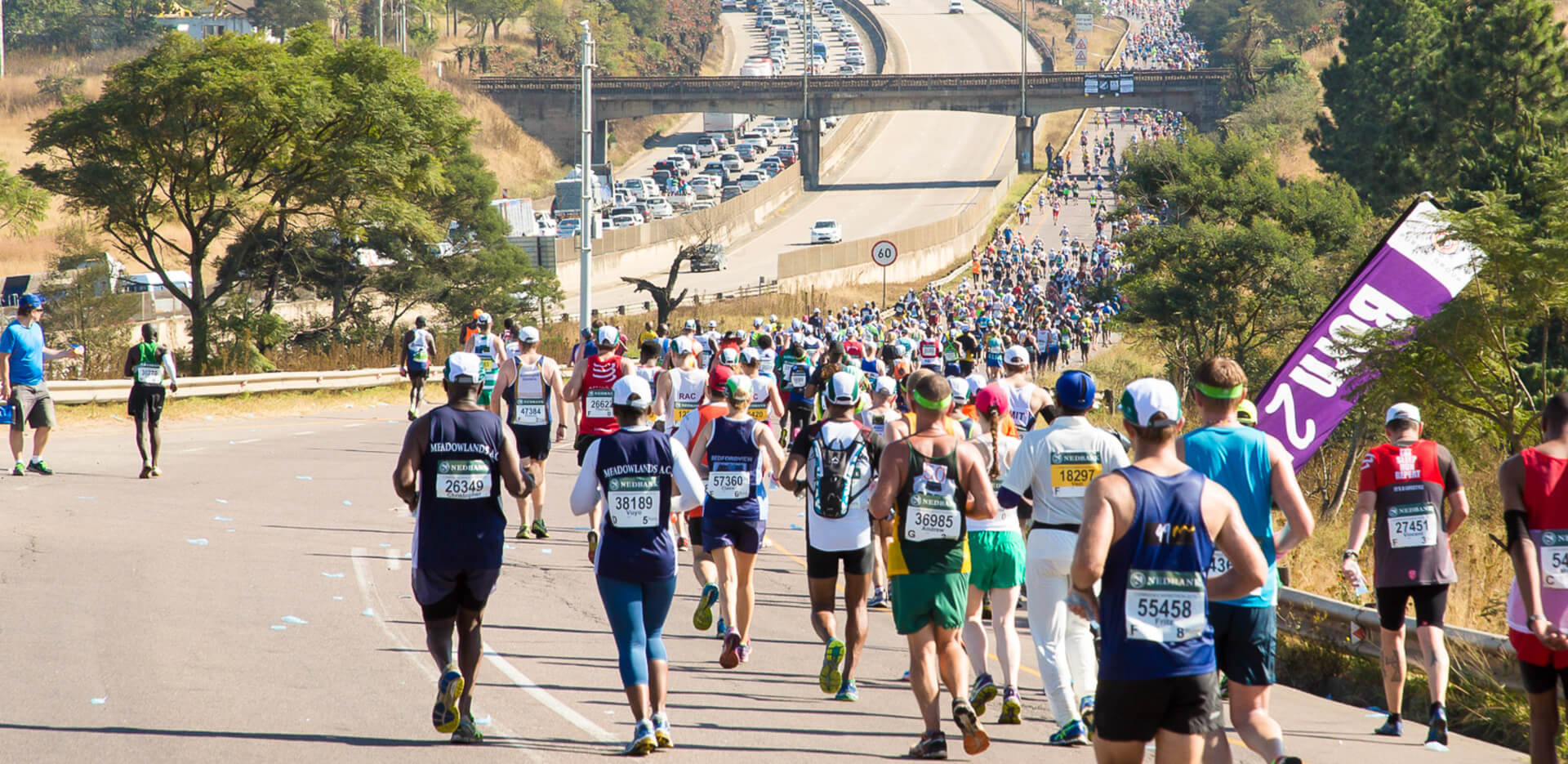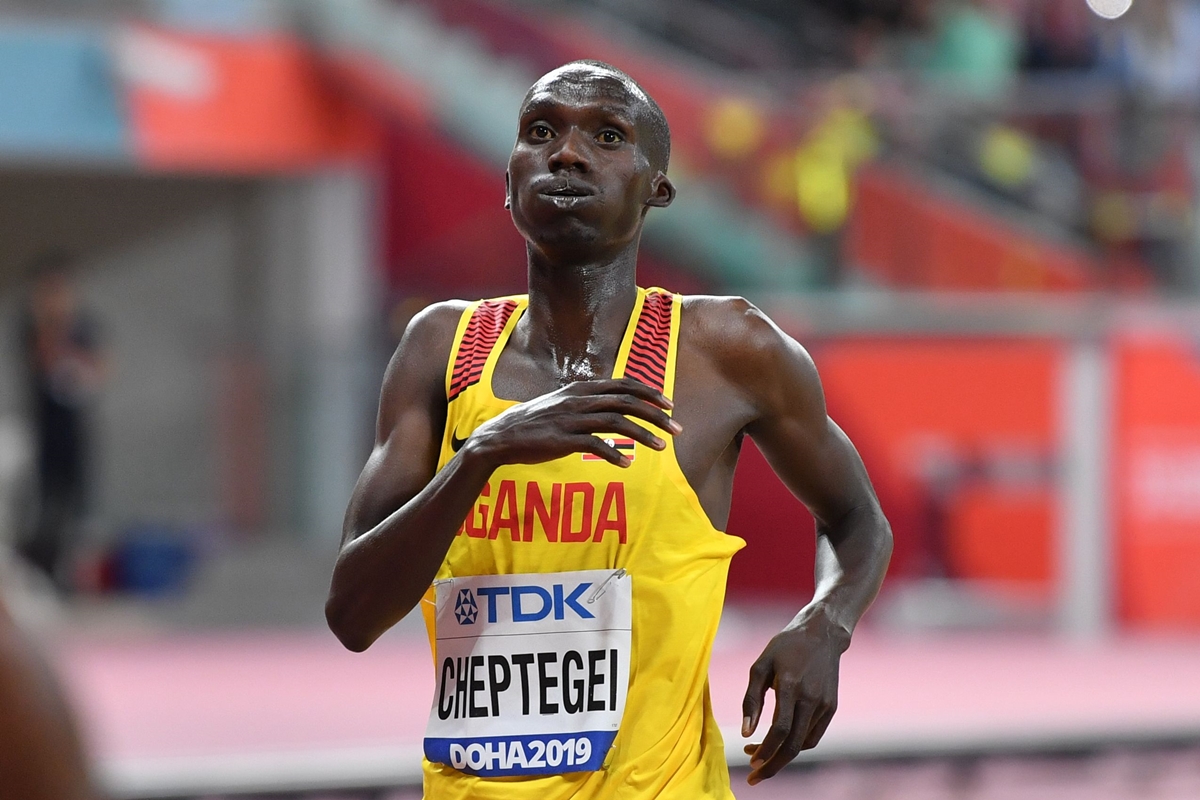Home>Misc>Featured>Why Are Humans So Good At Long Distance Running


Featured
Why Are Humans So Good At Long Distance Running
Modified: August 21, 2023
Discover the incredible endurance of humans in long distance running. Learn the reasons behind our exceptional abilities. Featured article.
Introduction
Humans are an extraordinary species, capable of accomplishing remarkable physical feats. While we may not possess the speed of a cheetah or the strength of a gorilla, there is one area where humans excel: long distance running. Unlike most animals, humans have the unique ability to run for extended periods of time, covering great distances without becoming exhausted.
This exceptional endurance is not a mere coincidence but is rooted in our evolutionary history. Our ancestors relied on their ability to run for long distances to survive and thrive in the challenging environments they inhabited. Over time, humans have developed specific anatomical, physiological, mental, and cultural adaptations that contribute to our remarkable long distance running abilities.
In this article, we will delve into the various factors that make humans so adept at long distance running. We will explore the evolutionary perspective, the intricate interplay of human anatomy and physiology, the energy efficiency of our bodies, our unique ability for persistence hunting, the endurance adaptations we possess, and the mental and cognitive factors that contribute to our success. Additionally, we will discuss the cultural and social elements that have shaped and facilitated our long distance running capabilities.
By understanding the reasons behind our prowess in long distance running, we can gain a deeper appreciation for the incredible capabilities of the human body. Let us embark on this journey to unravel the mysteries of why humans are so good at long distance running.
Evolutionary Perspective
To understand why humans are exceptional long distance runners, we need to examine our evolutionary past. Our ancestors, the early Homo species, lived in environments where survival necessitated endurance running. This endurance running ability played a pivotal role in the development of our species.
Through millions of years of evolution, humans evolved to be persistent hunters. Unlike other predators who relied on speed and strength to capture prey, our ancestors utilized endurance running. By tracking and pursuing animals for prolonged periods, they were able to exhaust their prey, steadily closing the distance until it succumbed to exhaustion and heat stroke.
This persistence hunting technique provided early humans with a significant advantage. It allowed them to access meat-rich food sources that were otherwise out of reach for their contemporaries. This steady availability of high-quality nutrition helped fuel the growth and development of our early ancestors, contributing to the expansion of the human brain and the development of our unique cognitive abilities.
Furthermore, endurance running played a crucial role in our social and cooperative nature. The need to cooperate, communicate, and strategize during a group hunt fostered the development of teamwork and social bonds among early humans. These social skills and cooperative behavior proved to be advantageous not just in hunting scenarios, but also in other aspects of life, ultimately shaping the cooperative nature of human societies.
From an evolutionary perspective, our exceptional long distance running abilities were essential for the survival and success of our species. The ability to cover great distances efficiently, track prey, and persistently pursue them granted humans a competitive advantage in our ancestral environments. These evolutionary adaptations laid the foundation for the endurance running capabilities we possess today.
Human Anatomy and Physiology
The anatomy and physiology of humans are uniquely suited for long distance running. Several key factors contribute to our exceptional endurance capabilities.
One of the most noticeable features is our upright posture and bipedal locomotion. Unlike quadrupedal animals, our bipedal structure allows for efficient energy transfer and better heat dissipation. Our long legs, arched feet, and elastic tendons act as springs, absorbing shock and storing energy during each stride. This energy is then released, propelling us forward with minimal effort.
In addition to our lower limb adaptations, our sweat glands also play a crucial role in regulating body temperature. Humans have a higher density of sweat glands compared to other mammals, which enables us to cool down through efficient evaporative cooling. This cooling mechanism allows us to dissipate heat and maintain a stable body temperature during prolonged physical activity.
Furthermore, our cardiovascular system plays a significant role in supporting long distance running. Humans have a well-developed heart and lungs, allowing for efficient oxygen delivery to the muscles. The increased capacity for oxygen uptake and transportation enables us to sustain physical exertion over extended periods of time without fatigue or oxygen debt.
Another advantage lies in our efficient cooling system. Humans have a large surface area-to-volume ratio, which facilitates heat dissipation through the skin. Additionally, the ability to regulate blood flow to the skin helps dissipate excess heat, preventing overheating during exercise.
Overall, the combination of our upright posture, specialized limb structures, efficient sweat glands, and cardiovascular adaptations sets us apart as exceptional long distance runners. Our anatomy and physiology have evolved to provide us with the necessary tools for efficient and sustained endurance running.
Energy Efficiency
One of the key reasons why humans excel at long distance running is our remarkable energy efficiency. Our bodies have evolved to maximize energy conservation and utilization, allowing us to cover great distances with minimal energy expenditure.
One factor that contributes to our energy efficiency is the way our bodies utilize fuel. Humans are capable of utilizing both fats and carbohydrates as energy sources, depending on the intensity and duration of the exercise. At lower intensities, the body relies predominantly on fat oxidation, which provides a sustained and efficient energy source. As the intensity increases, the body switches to carbohydrate utilization, which provides readily available energy for more intense efforts.
In addition to fuel utilization, our bodies are also highly efficient in storing and mobilizing energy. Glycogen, the stored form of carbohydrates in our muscles and liver, acts as a readily available energy reserve. This allows us to tap into our glycogen stores during prolonged exercise, sustaining our energy levels and delaying fatigue.
Furthermore, our bodies are adept at conserving energy through efficient movement patterns. The elasticity of tendons and ligaments allows for energy storage and release, reducing the energy required for each stride. Additionally, our bodies are efficient in maintaining a steady pace and minimizing unnecessary movements, further conserving energy.
Another energy-saving mechanism is the use of arm swing during running. This synchronized motion of the arms helps to counterbalance the movement of the legs, reducing the energy expenditure required for stabilization and balance.
Overall, the energy efficiency of the human body during long distance running is a result of the ability to utilize different fuel sources, effective energy storage and mobilization, efficient movement patterns, and arm swing. This energy efficiency allows us to sustain prolonged physical exertion, maintaining a steady pace and conserving energy for the duration of the run.
Persistence Hunting
One of the unique aspects of human long distance running is the strategy known as persistence hunting. This method, utilized by our ancestors, involves tracking and pursuing prey over extended distances until exhaustion. Persistence hunting was a crucial technique for securing food in early human societies.
The concept behind persistence hunting is simple yet effective. Early humans would select a suitable target and begin tracking it. With their exceptional endurance capabilities, humans could maintain a steady, relentless pace while their prey was forced to continuously evade and flee. As the pursuit continued, the prey would gradually tire, unable to sustain the same level of speed and agility.
Humans would use their tracking skills, observational prowess, and understanding of animal behavior to predict the movements and anticipate the exhaustion of their prey. Persistence hunters would patiently close the gap, waiting for the opportune moment to strike when the prey had reached a state of exhaustion.
This hunting technique required exceptional physical and mental endurance. Persistence hunters needed to remain focused, alert, and able to sustain their pace for hours on end. These hunting expeditions involved long-distance running in various terrains, exposing early humans to a wide range of physical challenges.
Persistence hunting not only provided humans with sustenance but also showcased our remarkable ability to outlast our prey through sheer endurance. It was a physical and mental challenge that required superior long distance running abilities, as well as strategic thinking and cooperative behavior within the hunting group.
While persistence hunting is no longer practiced in modern societies, its impact on our long distance running capabilities cannot be overlooked. The adaptive advantage gained from mastering this hunting technique played a significant role in shaping our endurance adaptations, as well as fostering the development of our cooperative and social behaviors.
Endurance Adaptations
Humans have undergone various physiological adaptations over time to enhance our endurance capabilities. These adaptations have enabled us to sustain prolonged physical activity and excel in long distance running.
One key adaptation is the development of slow-twitch muscle fibers, also known as type I muscle fibers. These muscle fibers are abundant in our muscles and are highly efficient in utilizing oxygen, allowing for sustained activity without fatigue. Slow-twitch muscle fibers are characterized by their resistance to fatigue and their ability to maintain a steady contraction over extended periods.
Another endurance adaptation is the increased capillary density in our muscles. Capillaries are tiny blood vessels that deliver oxygen and nutrients to the muscles. Higher capillary density improves oxygen delivery, enhances waste product removal, and supports the efficient functioning of the muscles during long distance running.
Furthermore, our bodies have a higher proportion of slow-oxidative muscle fibers compared to other animals. These muscle fibers rely primarily on aerobic metabolism, utilizing oxygen to produce energy. This reliance on aerobic metabolism contributes to our endurance capabilities and allows us to sustain activity for longer durations.
Additionally, humans have a higher VO2 max, which refers to the maximum amount of oxygen our bodies can utilize during intense exercise. This elevated VO2 max is a result of both our efficient cardiovascular system and the adaptations in our muscles to optimize oxygen uptake and utilization.
In terms of body composition, humans have a lower body fat percentage compared to other primates. This leaner physique reduces the energy requirements for long distance running and improves overall efficiency. The reduction in body fat also contributes to better heat dissipation, enabling us to regulate body temperature more effectively during exercise.
These adaptations, including the development of slow-twitch muscle fibers, increased capillary density, higher proportion of slow-oxidative muscle fibers, elevated VO2 max, and lower body fat percentage, collectively enhance our endurance capabilities and play a crucial role in our success as long distance runners.
Mental and Cognitive Factors
While physical adaptations certainly contribute to our long distance running abilities, mental and cognitive factors also play a significant role in our success as endurance runners.
One crucial mental factor is our ability to maintain focus and motivation during prolonged physical activity. Long distance running requires mental fortitude, the ability to push through discomfort and fatigue, and maintain a steady pace. Our capacity for mental endurance allows us to sustain effort and reach our running goals.
Another cognitive factor is our ability to regulate pace and energy expenditure. Humans possess the cognitive flexibility to adjust their running speed and conserve energy when needed. This ability to strategize and adjust our running tactics allows us to maintain a sustainable pace, avoid early exhaustion, and make calculated decisions during a long distance run.
Furthermore, the power of the mind-body connection shouldn’t be underestimated. Our mental state, emotions, and attitudes can significantly influence our performance in long distance running. Positive self-talk, visualization techniques, and mental imagery can enhance our running experience and boost endurance. Additionally, our ability to manage stress, control anxiety, and develop mental resilience can improve our overall performance during endurance activities.
Cognitive skills such as planning, problem-solving, and decision-making also come into play during long distance running. We need to navigate routes, make quick decisions, and adjust our running strategies based on changing environmental conditions or obstacles. These cognitive abilities allow us to adapt to different situations and optimize our running performance.
Lastly, the social and psychological aspects of long distance running can provide additional motivation and support. Participating in running groups or events, engaging in friendly competition or collaborations, and receiving support from fellow runners can enhance our enjoyment of the activity and increase our overall performance.
Overall, the mental and cognitive factors of focus, motivation, pace regulation, mind-body connection, cognitive skills, and social support are all essential components that contribute to our success as long distance runners. The combination of physical and mental readiness enables us to overcome challenges, push our limits, and achieve remarkable feats of endurance.
Cultural and Social Factors
In addition to biological and physiological factors, cultural and social influences have played a significant role in shaping our long distance running abilities. Cultural practices and societal norms have contributed to the development and promotion of endurance running among humans.
One important cultural factor is the historical tradition of long distance running. From ancient times to modern civilizations, running has been a part of various cultures and societies. Events such as marathons, ultramarathons, and long distance races have been celebrated and embraced around the world. These cultural practices have fostered a sense of community and created a platform for individuals to showcase their endurance capabilities.
Furthermore, cultural narratives and legends often highlight stories of long distance runners and their heroic feats. Historical figures, such as the Greek messenger Pheidippides running from Marathon to Athens, or indigenous hunters running across vast terrains, have become symbols of human endurance and determination. These narratives inspire generations and contribute to the cultural perception of endurance running as an admirable and valued attribute.
Social influences, such as peer groups and communities, also play a significant role in promoting and sustaining long distance running. Running clubs, online communities, and training groups provide support, motivation, and a sense of belonging. The social aspect of running fosters camaraderie, friendly competition, and shared experiences, which encourage individuals to push their limits and continue on their running journey.
The availability of running infrastructure and facilities is another cultural and social factor that has contributed to the popularity of long distance running. The development of dedicated running tracks, trails, and events has made the sport more accessible and appealing to individuals across various age groups and fitness levels.
Besides, advancements in technology and media have also played a role in promoting long distance running. Fitness trackers, smartphone apps, and online platforms provide tools and resources for tracking progress, setting goals, and connecting with like-minded individuals. Social media platforms allow for the sharing of running experiences, triumphs, and challenges, creating a virtual community of runners.
Overall, cultural and social factors have influenced the acceptance and encouragement of long distance running in various societies. The celebration of endurance running, the sense of community, the availability of infrastructure, and the advancements in technology have all contributed to the growth and popularity of the sport, fostering a culture of endurance and pushing human potential in long distance running.
Conclusion
Humans possess remarkable long distance running capabilities, setting us apart from other animals. Our evolutionary past, anatomical adaptations, physiological efficiency, persistence hunting techniques, endurance adaptations, mental and cognitive factors, and cultural and social influences have all contributed to our exceptional endurance abilities.
From an evolutionary perspective, our ancestors relied on endurance running for survival, using it as a hunting technique to secure food sources. Over time, our bodies underwent adaptations such as specialized limb structures, efficient cooling mechanisms, and an enhanced cardiovascular system to support our endurance capabilities.
Energy efficiency is another crucial aspect of our long distance running abilities. Our bodies have evolved to efficiently utilize fuel sources, store energy reserves, and employ efficient movement patterns, optimizing our energy expenditure during extended physical activity.
The persistence hunting technique, employed by our early ancestors, showcases our ability to tirelessly pursue prey over long distances. This hunting strategy helped shape our endurance adaptations and fostered the development of cooperative and social behaviors.
Physiological adaptations, including the presence of slow-twitch muscle fibers, increased capillary density, and a higher proportion of slow-oxidative muscle fibers, contribute to our endurance capabilities. Additionally, our mental and cognitive factors, such as focus, motivation, pace regulation, and cognitive skills, play a significant role in our long distance running success.
Cultural and social factors have further influenced the prevalence and growth of long distance running. Cultural practices, historical traditions, and social communities have created a sense of community, celebration, and support for endurance running. Advancements in technology and the availability of running infrastructure have also made the sport more accessible and appealing to individuals of diverse backgrounds.
In conclusion, humans excel at long distance running due to a combination of evolutionary, physiological, cognitive, and societal factors. Our abilities are a testament to the intricate interplay between biology, culture, and the indomitable spirit of human perseverance. As we continue to explore and push our limits, long distance running will continue to be a testament to the extraordinary capabilities of the human body and mind.

